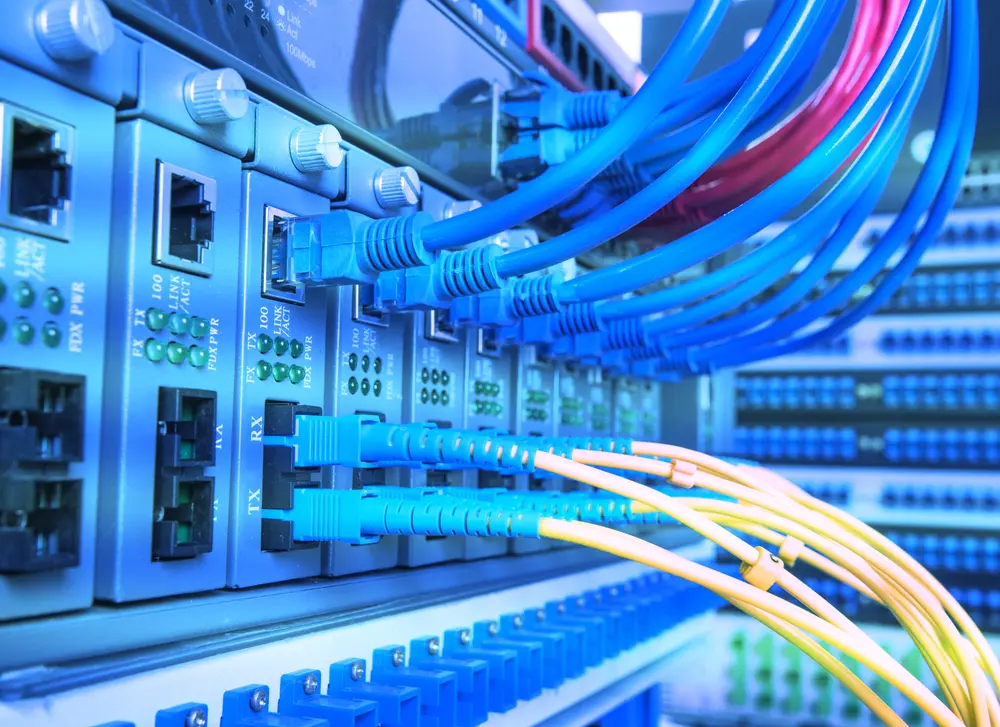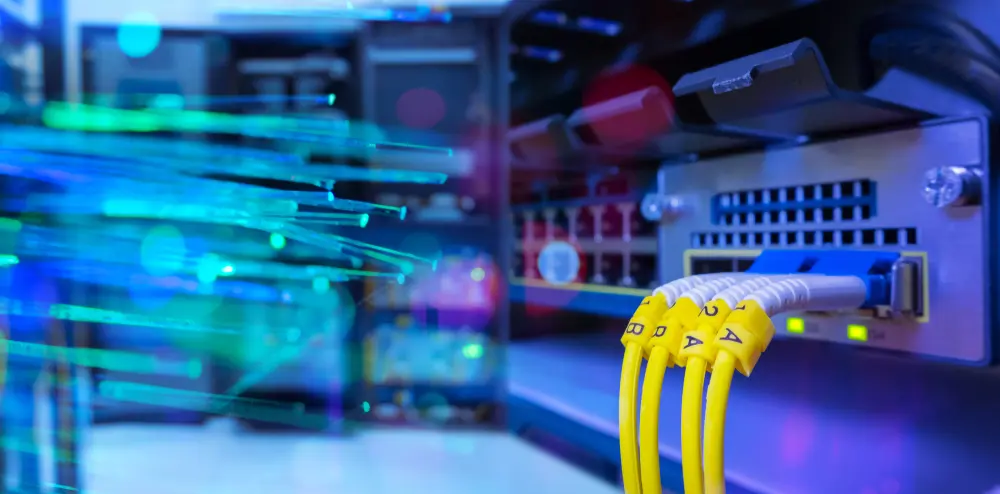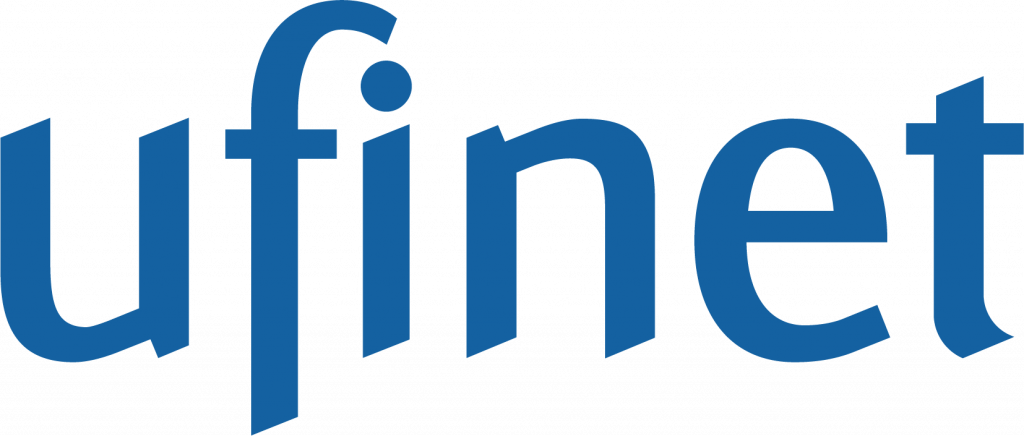Today, connectivity is a critical component for the operation of any business. Speed, reliability and security in data transmission are essential to operate efficiently in the digital economy. In this context, fiber optics emerges as a cutting-edge technological solution that not only meets these requirements, but also takes business connectivity to a new level.
Fiber optics is a data transmission technology that uses glass or plastic wires to send information in the form of light pulses. This means of transmission offers a series of relevant advantages for companies, organizations and other enterprises, making a significant difference in terms of performance and efficiency.
Unmatched Speed and Reliability
One of the key benefits of fiber optics for your business is its impressive data transmission speed. In contrast to conventional copper connections, optical fiber allows much higher bandwidth, which translates into ultra-fast information transfer. This speed not only optimizes daily operations, but also improves the user experience and enables the implementation of more advanced applications.
In addition to speed, reliability is another aspect where fiber opticsshines. Unlike copper connections, optical fiberis immune to electromagnetic interference and is not affected by adverse weather conditions. This means that your business will enjoy a constant and stable connection, significantly reducing the risk of unplanned outages.
Scalability for the future
In today’s business environment, the ability to scale efficiently is essential. Fiber optics offers a highly scalable solution that adapts to the growing demands of your business. As you expand your operations and need more bandwidth, fiber optics allow for easy scalability without compromising performance. This limitless growth capability ensures that your business can keep up with market demands and take advantage of emerging opportunities.
Efficiencyin data transmission and comprehensive security
Efficiency in data transmission is another key benefit that fiber optics brings to your business. By transmitting information using pulses of light, signal losses are minimized, ensuring accurate and fast data delivery. This translates into more effective communication and the ability to perform real-time operations, which is crucial in dynamic business environments.
Data security is a constant concern for any company. Fiber optics add an additional level of security to your network. Because it is difficult to intercept and does not generate electromagnetic radiation, optical fiber reduces the risk of hacking and ensures the integrity of your business data.
Numerous companies have already experienced a positive transformation by adopting fiber optics. Case studies reveal significant improvements in operational efficiency, customer satisfaction and the ability to address new market opportunities. From small businesses to large-scale corporates, fiber optics has proven to be a key enabler for success in the digital age.
The implementation of fiber optics can be carried out through various contracting models. UFINET, for example, offers flexible options, either through an irrevocable right of use (IRU) or lease. This flexibility allows companies to tailor the connectivity infrastructure to their financial needs, either through capital investments or operating expenses over time.
When evaluating costs and return on investment (ROI), it is essential to consider not only the initial deployment, but also the long-term benefits. Fiber optics delivers significant ROI as it improves operational efficiency, drives business growth and strengthens competitive position.

Choosing the right fiber optic for my business internet
Choosing the right fiber optics for your business internet is a critical decision that can have a fundamental impact on the efficiency, speed and security of your operations. Here is a detailed guide with key tips to help you make the best decision and ensure optimal performance.
Understand your bandwidth needs: Before diving into the world of fiber optics, understand the specific bandwidth needs of your business. Evaluate the volume of data they handle on a daily basis and project your future demands. This analysis will provide the basis for determining the type and quantity of optical fiber required.
Examine the existing infrastructure: before deciding on a fiber optic solution, perform a detailed assessment of your current infrastructure. It considers factors such as distance to be covered, type of buildings and network topology. This information will help you select the fiber optic type and network design best suited for your business environment.
Compatibility with network protocols: make sure that the selected fiber optic is compatible with the network protocols you use in your company. The ability to seamlessly integrate with your existing infrastructure is crucial to avoid disruptions and ensure a smooth transition to the new technology.
Evaluate the speed and bandwidth offered:
data transmission speed and bandwidth are key elements when selecting fiber optics. Make sure you choose a solution that not only meets your current needs, but also offers the scalability needed for future business growth.
Consider reliability and stability:
stability and reliability are essential for the uninterrupted operation of your business. Investigate the fiber optic provider’s reputation in terms of network reliability and uptime history. A stable connection is important to avoid productivity losses and maintain customer satisfaction.
Data security and interference resistance:
data security is a priority in any company. Fiber optics, being immune to electromagnetic interference, offers an additional level of security for your business data. Make sure that the solution you choose complies with security standards and is resistant to external threats.
Flexibility and scalability:
Opt for a fiber optic solution that offers flexibility and scalability. Your business needs may change over time, and it is valuable to choose an infrastructure that can easily adapt to changes without compromising performance.
Contracting models and costs
Fiber optic fiber contracting models: includes the contracting models offered by fiber optic providers. Some providers offer options such as IRU (irrevocable right of use) or leasing. Evaluate which one best suits the financial needs of your business, taking into account both initial and long-term costs.
Technical support and customer service:
the quality of technical support and customer service are critical aspects when choosing a fiber optic provider. Make sure that the provider offers efficient customer service and fast technical support in case of problems. This will ensure that any issues are resolved in a timely manner, minimizing downtime.
Provider ratings and reviews:
Research and consult evaluations and reviews from other customers of the fiber optic provider you are considering. The experiences of other companies can provide valuable information about service quality, customer satisfaction and potential challenges you may face.
The adoption of fiber optics is emerging as a key factor in boosting connectivity and performance in the business environment. Fiber optics, being the backbone of the network infrastructure, plays a vital role in providing unmatched transmission speeds, robust bandwidth and a secure foundation for business data exchange. This technology, backed by its immunity to electromagnetic interference and its ability to transmit large volumes of information over significant distances, is the smart choice for ensuring operational stability and data security in any enterprise.

Fiber optics not only meets today’s connectivity needs, but also establishes a solid foundation for future business growth. Its flexibility and scalability allow companies to easily adapt to changing bandwidth demands, providing a comprehensive solution that evolves with changing needs. In addition, by being resistant to interference and offering a stable connection, fiber optics ensure business continuity by minimizing downtime and maintaining productivity.
Flexible contracting and cost models, coupled with strong technical support and customer service back-up, complete the picture, giving companies the freedom to choose a customized solution that aligns with their financial and operational objectives.
Ultimately, fiber optics is not simply a network infrastructure; it is the backbone that drives digital transformation and empowers businesses to compete in the modern era. By investing in fiber optics, companies not only improve their current connectivity, but also ensure that they are prepared to face the challenges and seize the opportunities of tomorrow. Fiber optics is presented as the path to excellence in connectivity, offering a solid foundation for continued business progress and success in an increasingly interconnected world.



